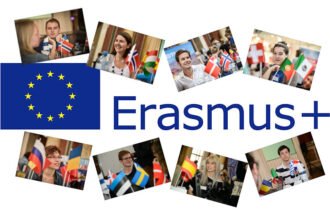Moving to a new country within the European Union (EU) or European Economic Area (EEA) as an immigrant involves more than just finding a home or starting a new job—it often includes navigating complex legal frameworks around transport, vehicle registration, and driving licenses. One of the key systems enabling seamless cross-border recognition of driving credentials in Europe is EUCARIS—the European Car and Driving License Information System.
As a new immigrant, understanding how EUCARIS works can help you validate your foreign license, register your vehicle, avoid fraudulent activity, and meet local road law requirements. In this comprehensive blog post, we will explore how EUCARIS supports the process of driving license recognition and vehicle data sharing, who can access it, and how it affects you when relocating within or to Europe.
What Is EUCARIS?
EUCARIS, or the European Car and Driving License Information System, is a decentralized, secure platform that allows European countries to exchange vehicle registration and driving license information.
It was first established by a treaty in 2000 between five founding countries—the Netherlands, Belgium, Germany, Luxembourg, and the United Kingdom—and has since expanded to include almost all EU and EEA countries, as well as Switzerland.
Managed under the EUCARIS Secretariat, the system supports real-time access to national vehicle and driver databases, enabling law enforcement, vehicle registration authorities, and driving license authorities to validate and verify data quickly and efficiently.
The Role of EUCARIS in License Recognition for New Immigrants
When you immigrate to an EU or EEA country, your driving license from your country of origin may not automatically be recognized. You may need to exchange, convert, or validate your license, depending on:
-
Your country of origin
-
The bilateral agreements between countries
-
Your license class and category
-
The duration of your stay
This is where EUCARIS plays a critical role:
-
It verifies the authenticity of your existing license
-
Confirms that it is not suspended, revoked, or forged
-
Shares necessary data to assist in license exchange or issuance
-
Helps prevent individuals from holding multiple licenses across countries
Through EUCARIS, your new host country’s transport authority can access information about your license issued in another country to determine eligibility for recognition or exchange.
How EUCARIS Works Technically
EUCARIS is not a central database. Instead, it is a decentralized communication network that links national vehicle and driving license databases across participating countries. Here’s how it functions:
-
Request Initiation: A license-issuing or road traffic authority initiates a request for data (e.g., to verify a foreign license).
-
Secure Connection: The request is sent via a secure encrypted channel using standard EUCARIS protocols.
-
Data Exchange: The responding country’s database searches for the requested record and sends a structured reply.
-
Data Verification: The requesting authority uses the data to validate the authenticity and status of the license.
EUCARIS uses predefined communication formats and strict access controls to ensure data protection and security, aligned with GDPR requirements.
Participating Countries and Their Use of EUCARIS
As of 2024, the majority of EU and EEA Member States use EUCARIS, including:
-
Germany
-
France
-
Netherlands
-
Poland
-
Italy
-
Sweden
-
Spain
-
Austria
-
Ireland
-
Czech Republic
-
Belgium
-
Luxembourg
-
Greece
-
Finland
-
Slovakia
-
Croatia
-
Romania
-
Hungary
-
Portugal
-
Estonia
-
Lithuania
-
Latvia
-
Slovenia
-
Bulgaria
Additionally, countries like the United Kingdom and Switzerland continue to interact with EUCARIS for mutual administrative cooperation despite Brexit.
Each country integrates EUCARIS with its own national systems like:
-
The RDW (Netherlands Vehicle Authority)
-
DVLA (UK Driver and Vehicle Licensing Agency)
-
KBA (German Federal Motor Transport Authority)
-
ANTS (Agence Nationale des Titres Sécurisés in France)
Situations Where EUCARIS Supports Immigrants
Exchanging a Non-EU License
If you arrive in an EU country with a valid driving license from a non-EU country, your new country may allow you to exchange it for a local license without taking a driving test. This process often involves:
-
Providing your original license
-
Submitting a certificate of authenticity
-
Ensuring your license is not suspended
Using EUCARIS, the licensing authority in your new country can directly verify the details and status of your original license with the issuing country.
Avoiding License Fraud
Some individuals attempt to acquire multiple licenses across different countries or submit forged documents. EUCARIS flags:
-
Duplicate license attempts
-
Suspensions or bans
-
Inconsistencies in issuance data
This helps protect both immigrants and authorities from identity fraud, impersonation, or invalid document usage.
Transferring Vehicle Ownership
EUCARIS also supports vehicle registration, helping immigrants:
-
Import cars from their home countries
-
Transfer ownership of previously registered EU vehicles
-
Validate registration data when buying or selling vehicles in a different country
This ensures smooth registration and compliance with local tax and road laws.
Steps for New Immigrants to Exchange or Register a License Using EUCARIS-Connected Authorities
Step 1: Check Recognition Agreements
Each country has its own policies on license recognition. Start by checking the national transportation agency of your new country:
Step 2: Submit a License Exchange Request
This typically requires:
-
Original driving license
-
Passport or residence permit
-
Proof of residence (e.g., utility bill)
-
Passport-sized photos
-
Application form from the local transport office
Step 3: License Verification via EUCARIS
Your new country’s licensing office uses EUCARIS to:
-
Confirm your existing license is valid
-
Check for past suspensions
-
Verify personal data matches
Once verified, your local authority can proceed to issue a new license or request additional testing if required.
What if Your Country of Origin Is Not Part of EUCARIS?
If you immigrate from a country not participating in EUCARIS, verification may take longer and may require:
-
Legalized or apostilled copies of your license
-
Translations by a certified authority
-
Issuance of a certificate of authenticity from the consulate
-
Submission of verification requests via postal or email
Countries with no agreement or technical connectivity may require you to retake the written and practical driving tests locally.
Data Protection and Privacy Within EUCARIS
EUCARIS operates in strict compliance with the General Data Protection Regulation (GDPR). It ensures:
-
Data access is limited to authorized users
-
All exchanges are encrypted
-
No central storage of personal data
-
Each country maintains its own database
Data is only shared when there’s a justified administrative or legal request, such as a license exchange, law enforcement inquiry, or accident investigation.
Learn more about EU data privacy laws on the European Commission’s GDPR site.
Other Use Cases: Beyond License Exchange
While this guide focuses on immigrants and license recognition, EUCARIS also supports:
-
Law enforcement checks for stolen vehicles or fake registrations
-
Cross-border road safety enforcement
-
Toll and emissions zone compliance
-
Insurance validation
-
EU-wide recalls of defective vehicles
Its growing role in EU-wide transport safety and cooperation means that having accurate, registered, and validated license data is now more crucial than ever.
Challenges and Limitations of EUCARIS
While EUCARIS is highly effective, it still faces limitations:
-
Not all countries outside the EU are linked, making non-EU license verification slower
-
Variations in data quality between countries can cause inconsistencies
-
Language barriers and differing terminologies can delay verifications
-
Brexit has introduced some bureaucratic complexity for UK license holders
Despite these, EUCARIS continues to be the most trusted cross-border driving data system in Europe.
The Future of EUCARIS: Integration with eID and Mobility-as-a-Service
With the digital transformation of European mobility, EUCARIS is evolving to integrate with other systems, such as:
-
EU Digital Identity (eID) initiatives
-
Cross-border smart toll systems
-
Green mobility tracking
-
AI-supported enforcement
These developments will make it easier for immigrants and travelers alike to move, work, and drive across the continent while ensuring compliance and safety.
Conclusion: Why EUCARIS Matters to You as a New Immigrant
Understanding EUCARIS can significantly simplify your transition into European life. Whether you plan to drive your own car, rent a vehicle, or work in a transport-related industry, knowing that your driving credentials can be quickly and securely validated helps avoid delays, denials, or legal troubles.
As a new immigrant, always work with your host country’s transport authority, follow official guidance, and ask whether your license and vehicle history can be processed through EUCARIS. With proper documentation and knowledge, you can confidently steer into your new European chapter.



